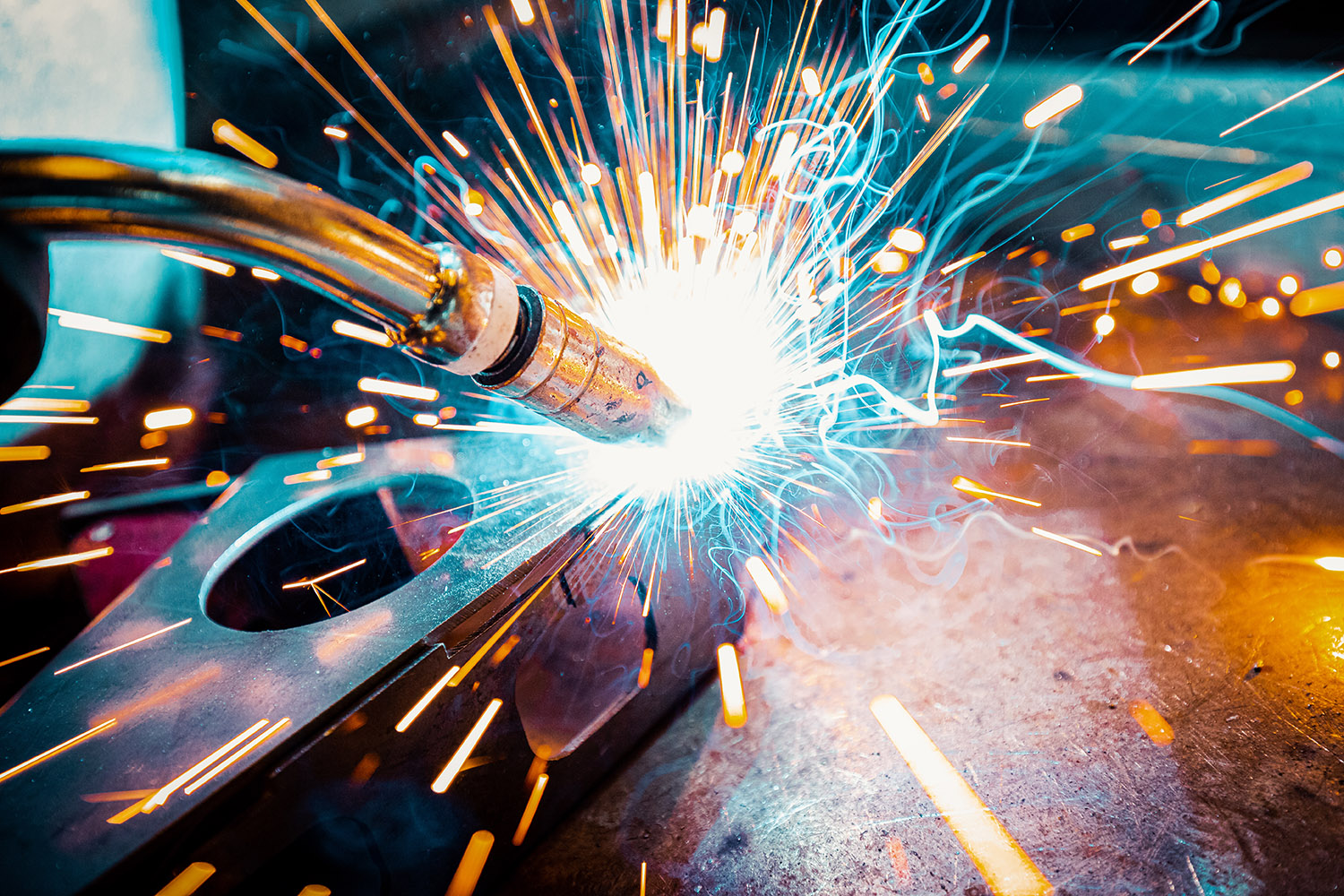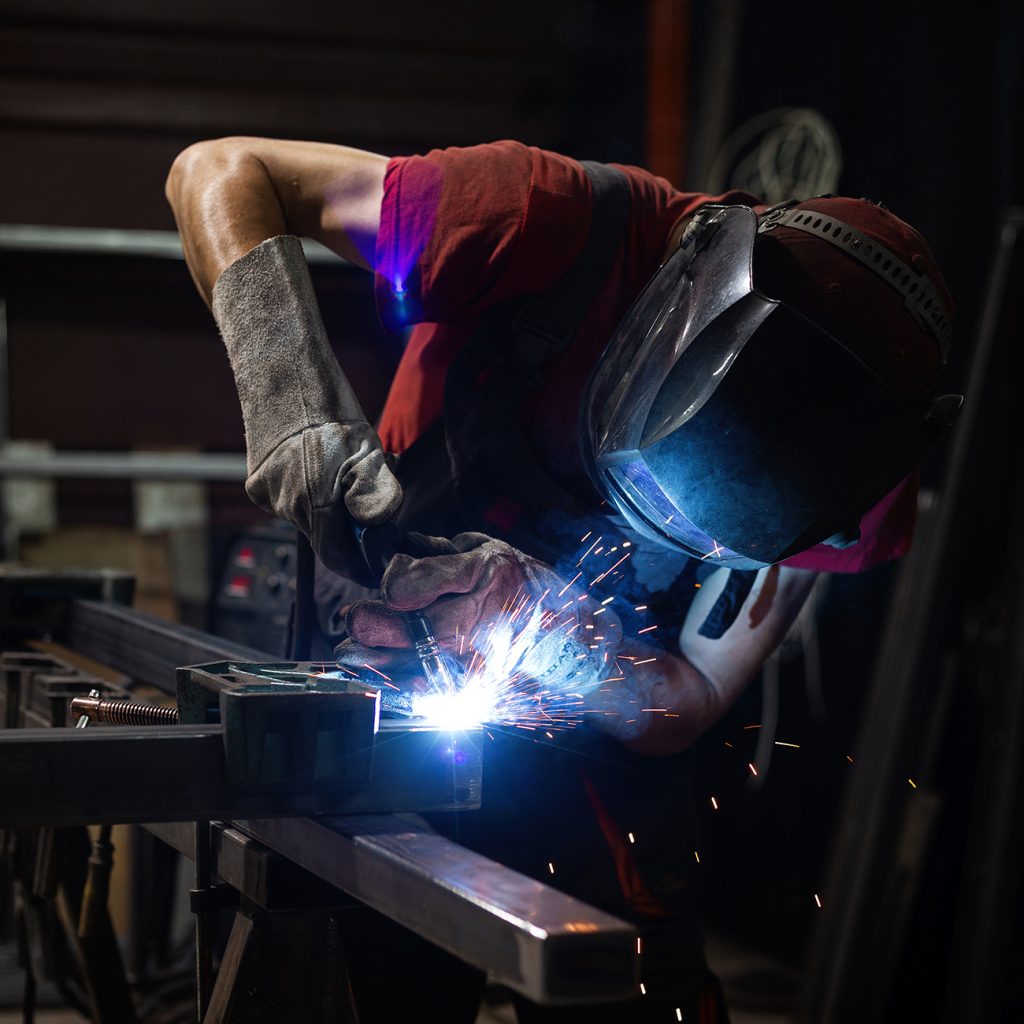Typical Welding Repair Work Issues and Exactly How to Address Them Successfully
Welding fixings commonly encounter a variety of issues that can threaten the integrity of the final product. Common issues consist of inadequate penetration, porosity, and misalignment, amongst others. Each flaw provides one-of-a-kind difficulties that require specific methods for resolution. Understanding these concerns is crucial for welders aiming to improve their outcomes and skills. This conversation will explore these usual welding repair service concerns and reliable methods to address them.
Poor Infiltration
Insufficient infiltration happens when the weld metal stops working to completely fuse with the base material, resulting in weak joints and potential structural failures. This concern typically stems from not enough warm input, incorrect electrode angle, or incorrect welding rate. Welders might run into poor infiltration as a result of a mistake of the essential criteria for a specific material density or type. In addition, contamination on the base product's surface can prevent reliable bonding, worsening the trouble. To address poor infiltration, welders must ensure ideal settings on their tools and preserve a tidy job surface area. Routine assessment of welds is recommended to determine any kind of deficiencies early, permitting for prompt modifications and the avoidance of compromised architectural integrity in welded assemblies.
Porosity
Porosity is a common issue in welded joints that manifests as tiny gas bubbles caught within the weld metal. This issue can jeopardize the integrity of the weld, resulting in lowered stamina and possible failure under stress. Montana Mobile Welding and Repair Fabrication. Porosity generally arises from contamination, moisture, or incorrect welding methods, which permit gases to run away into the molten weld swimming pool. To resolve porosity, welders need to assure correct surface area prep work, preserve a tidy functioning atmosphere, and use appropriate welding parameters. Additionally, picking the right filler product and protecting gas can mitigate gas entrapment. Normal assessment and testing of welds can aid identify porosity early, assuring timely restorative actions are taken, thus maintaining the quality and reliability of the bonded structure
Misalignment
Misalignment in welding can occur from different elements, consisting of incorrect arrangement and thermal growth. Comprehending the source is vital for reliable resolution. Several correction techniques are offered to straighten parts and assure architectural honesty.
Sources of Imbalance
Welding misalignment commonly stems from a variety of underlying problems that can endanger architectural stability. One main cause is inappropriate fit-up of parts prior to welding, which can cause spaces and uneven surfaces. Variants in thermal development throughout the welding procedure can also cause distortion, specifically if the products being signed up with have various coefficients of development. Additionally, inadequate fixturing and clamping may stop working to hold elements securely in location, resulting in movement during welding. Badly maintained devices, including welding machines and devices, may present variances in the weld grain, further adding to misalignment. Operator error, stemming from insufficient training or experience, can likewise play a substantial function in creating misaligned welds.

Improvement Strategies Offered
Resolving imbalance efficiently requires a mix of rehabilitative techniques customized to the particular problems at hand. One typical technique is making use of components or jigs to hold elements in the correct position throughout welding, making certain constant alignment. Additionally, preheating the products can help in reducing distortion and improve fit-up. For significant imbalance, mechanical adjustment methods, such as utilizing hydraulic jacks or clamps, can be used to fix the position before welding. Post-weld warm treatment may likewise be needed to relieve stresses triggered by misalignment. Lastly, cautious evaluation and modification throughout the setup stage can prevent misalignment problems from ending up being substantial issues, advertising a smoother welding procedure and boosting total architectural integrity.
Distortion
Distortion is a common obstacle in welding that can emerge from different elements, including uneven heating & cooling. Comprehending the root causes of distortion is crucial for carrying out reliable avoidance strategies. Resolving this issue not just improves architectural integrity however additionally improves the total top quality of the weld.
Reasons for Distortion
When based on the intense warmth of welding, products usually go through adjustments that can bring about distortion. This phenomenon mostly arises from thermal growth and tightening during the welding procedure. As the weld location warms up, the material expands; upon cooling, it gets, which can create inner stress and anxieties. On top of that, uneven home heating across a workpiece can aggravate these tensions, causing bending or flexing. The sort of product additionally plays a significant function; metals with varying thermal conductivity and coefficients of development might react in a different way, resulting in unforeseeable distortions. Bad joint style and insufficient fixturing can add to misalignment during welding, boosting the chance of distortion. Comprehending these causes is crucial for reliable welding repair service and avoidance methods.
Avoidance Techniques
Reliable avoidance techniques for distortion throughout welding concentrate on managing warmth input and making certain correct joint design. Preserving a regular warm input assists to lessen thermal expansion and contraction, which can result in distortion. Making use of strategies such as preheating the workpiece local welders can likewise decrease the temperature level gradient, advertising uniform heating. Furthermore, choosing ideal joint styles, such as T-joints or lap joints, can enhance stability and reduce stress concentrations. Implementing appropriate fixturing to protect the work surfaces in area better aids in maintaining positioning throughout the welding procedure. Finally, staggered welding series can disperse warmth a lot more equally, stopping local distortion. By using these techniques, welders can greatly reduce the possibility of distortion and enhance the overall quality of their welds.
Breaking
Breaking is a typical concern run into in welding fixings, typically arising from different elements such as inappropriate cooling rates, material selection, or inadequate joint prep work. The event of cracks can considerably compromise the stability of the weld, bring about possible failures during operation. To resolve this issue, welders should first analyze the origin, making certain that products are compatible and properly picked for the certain application. Furthermore, managing the air conditioning price during the welding process is necessary; quick cooling can induce stress and bring about breaking. Proper joint layout and prep work also add to reducing the risk. Carrying out these strategies can improve weld top quality and longevity, ultimately decreasing the possibility of fracturing in completed weldments.

Insufficient Blend
A substantial problem in welding fixings is incomplete blend, which happens when the weld steel does not appropriately bond with the base product or previous weld passes - Belgrade. This problem can lead to weaknesses in the joint, possibly jeopardizing the honesty of the bonded structure. Factors contributing to insufficient combination consist of not enough warmth input, inappropriate welding technique, and contamination of the surface areas being joined. To click for source address this concern efficiently, welders should assure proper pre-weld cleaning and surface prep work, in addition to readjust their welding criteria to accomplish sufficient penetration and fusion. Regular assessment throughout the welding process can also assist determine incomplete fusion early, allowing for prompt rehabilitative measures to enhance the total top quality of the weld
Overheating
While welding fixings can enhance structural integrity, overheating offers a significant difficulty that can result in product degradation. Excessive warmth throughout welding can change the mechanical residential or commercial properties of steels, causing lowered stamina, raised brittleness, and bending. This phenomenon is specifically crucial in high-stress applications where structural integrity is extremely important. Recognizing overheating can entail aesthetic examinations for discoloration or distortion, in addition to checking temperature throughout the welding procedure. To mitigate discover this the threats connected with overheating, welders ought to employ proper methods, such as regulating heat input, adjusting traveling speed, and utilizing suitable filler materials. Additionally, executing pre- and post-weld heat therapies can aid recover product residential or commercial properties and enhance the general high quality of the repair, guaranteeing long-lasting efficiency and security.
Frequently Asked Concerns
What Are the Typical Indications of a Welding Problem?

Just How Can I Check My Welds for Top quality?
To evaluate welds for high quality, one can make use of aesthetic inspections, ultrasonic testing, and radiographic approaches. Each strategy assures structural honesty, identifies problems, and verifies adherence to defined requirements, inevitably improving the dependability of the bonded joints.
What Safety Precautions Should I Take While Welding?
When welding, one ought to prioritize safety by putting on ideal individual protective equipment, guaranteeing proper air flow, securing combustible materials away, preserving a tidy work area, and knowing environments to avoid injuries and mishaps.
Can I Fix a Weld Without Remodeling the Entire Joint?
Fixing a weld without renovating the whole joint is possible, depending upon the damages (Welding). Techniques such as grinding, including filler material, or making use of a welding procedure can efficiently address specific imperfections while maintaining the surrounding framework
What Equipment Are Vital for Effective Welding Fixes?
Essential devices for efficient welding fixings consist of a welding maker, wire brush, mill, protective gear, clamps, and filler products. Each device plays a vital duty in making certain top quality and safety and security during the repair service procedure. Porosity usually emerges from contamination, moisture, or incorrect welding techniques, which enable gases to leave right into the liquified weld swimming pool. Improperly conserved devices, including welding machines and devices, might present incongruities in the weld bead, additional adding to misalignment. When subjected to the extreme warmth of welding, products frequently undertake modifications that can lead to distortion. Fracturing is a typical problem experienced in welding fixings, usually resulting from different factors such as incorrect cooling rates, material option, or poor joint preparation. A significant concern in welding repairs is insufficient combination, which takes place when the weld metal does not properly bond with the base material or previous weld passes.